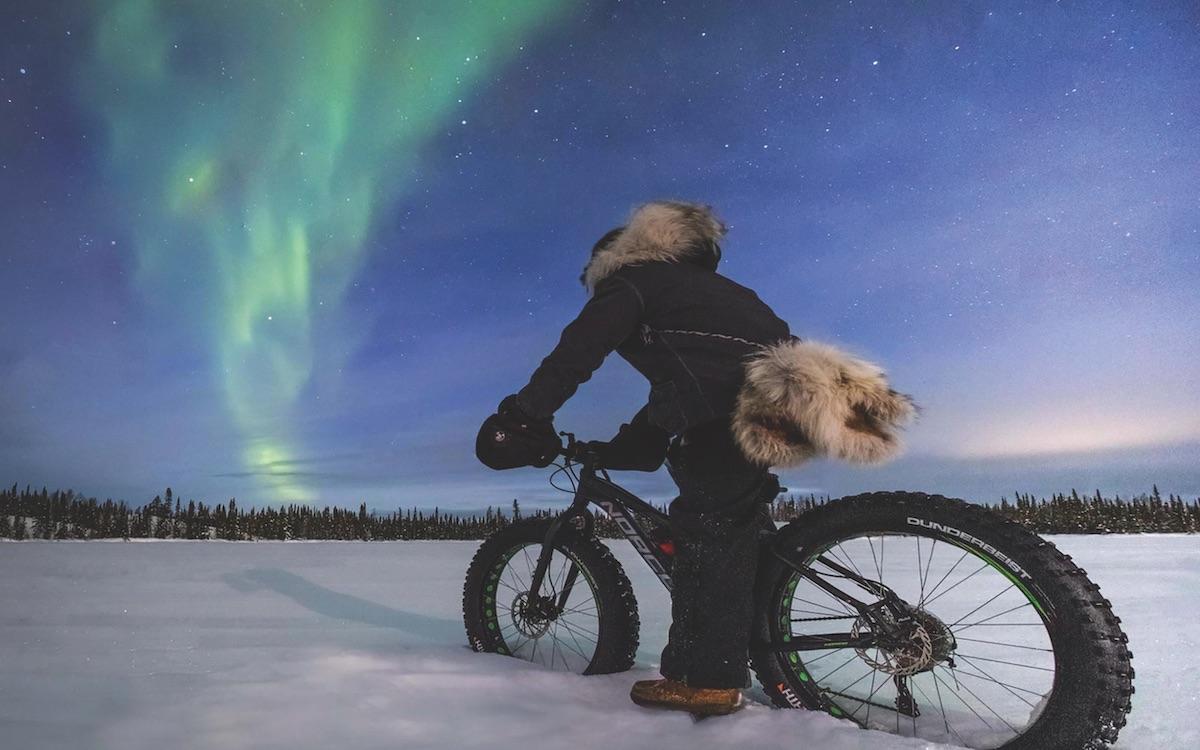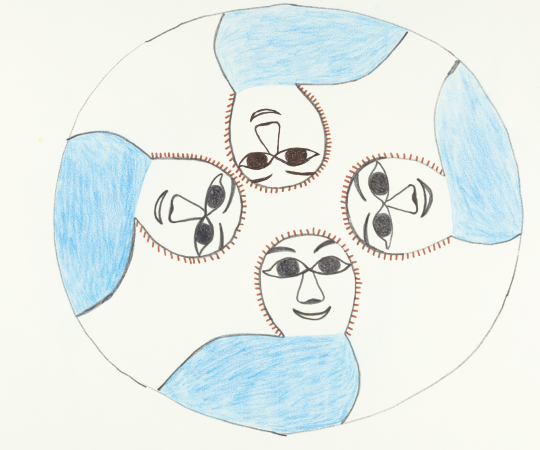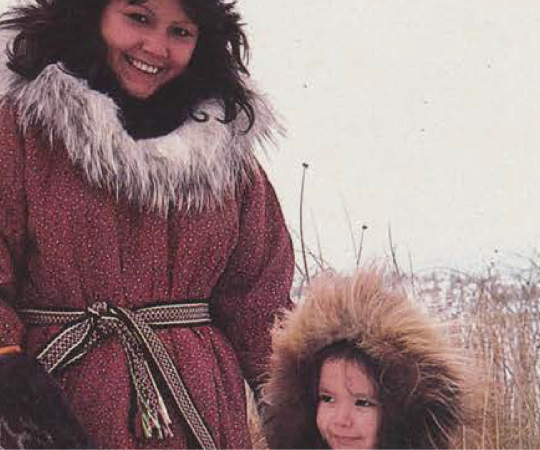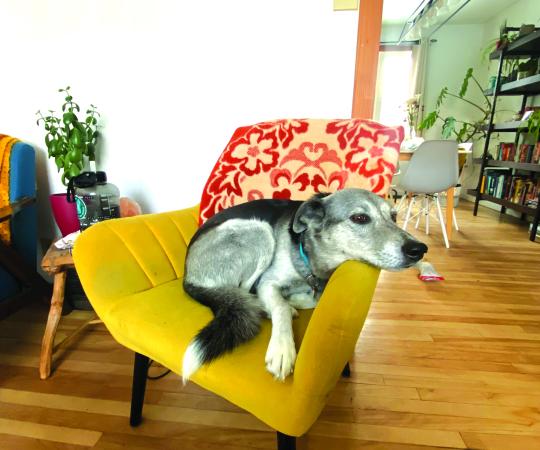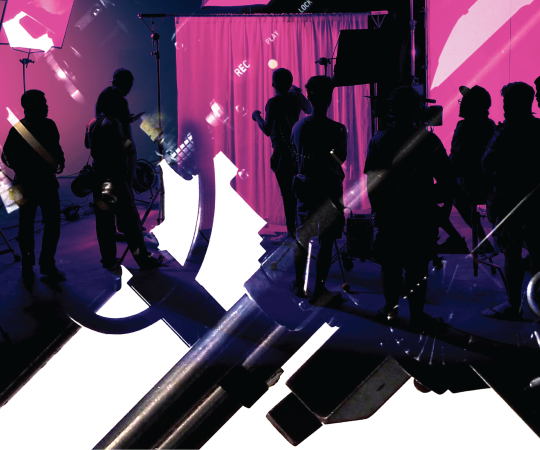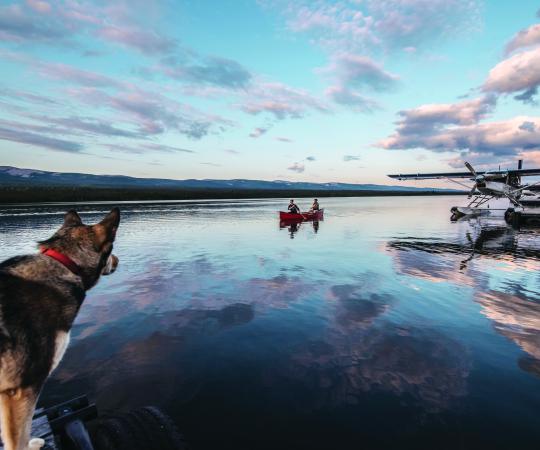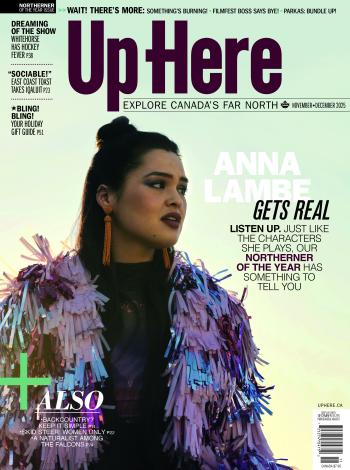It’s 7:30 am on a quiet residential street in Yellowknife when you hear it: the soft squeak of snow under tires. Out of the winter darkness, they peddle—the fat bikes cometh.
In Yellowknife, it’s not uncommon to accessorize a bike helmet with your business suit instead of hopping in a car. But winter can throw a spanner in the spokes. Enter, the fat bike. Although they’re a relatively recent addition to the North, the off-road bicycles have become a staple of northern living, and are now a grow- ing tourist attraction.
“My riding season really did end when the snow landed,” says Benjamin Clark. The bike department manager at Overlander Sports in Yellowknife, he’s also one of the peddling legions who bike their way to work much of the year in the territory’s capital. He says fat bikes really did push his biking season year-round.
The fat bike is essentially a wider-built, off-road bicycle with oversized tires, designed to ride on soft, squishy surfaces with low ground pressure. They first became popular in the 1980s, when cyclists started using them for desert travel over sandy terrain. But where fat bikes really hit their stride was when they went north—far north. When the bikes made their way to Alaska, it was all over. Winter riders discovered their use careening over frosty mountains or just transporting people to their offices on frigid streets. It went so well, Clark says some manufacturers now come up to the Canadian North to test their bikes.
“They started out in California in the deserts and on the beaches as something where they could balloon-down the tires and reduce the air pressure to kind of float on the sand,” he says. “Then guys started bringing them north and they became Canada’s winter bike. Which for us, up here, that’s a great thing to have.”
Clark has been fat-biking it up here for about five years, since around the time he says they really hit Yellowknife hard.
“If you ride a bike you can ride a fat bike.”
There is technique involved, however. There’s a lot more mass on a fat bike and the turning radius is a lot larger, not to mention the acceleration can take more than a quick push-off. But, when the conditions are right, they can actually be more comfortable on uneven terrain than a regular bike.
“I think with the new fat bikes especially, it smooths out the trail,” says James Minifie, owner and lead guide with Skookum Backcountry Adventures in Whitehorse. Newer bikes have features that make the ride even more plush, with more attention paid to the bike’s geometry; the angles of the various parts that influence the ride. “A lot of our summer trails, because mountain biking has taken off, are quite blown-out, actually. They’re very rooty. Once you get that layer of snow on and it gets packed, it’s almost more enjoyable, I find.”
Minifie is a fat-biker himself, and saw the potential in guided fat bike trips. The first year Skookum ran a tour, he says it was mainly locals taking their bikes from commute to backcountry. But since then, it’s become a big tourist draw, with riders from Europe and the United States taking to the trail. The trip takes four to five days, depend- ing on the riders, following essentially the Yukon Quest sled dog trail between White- horse and Carmacks.
“Generally, it’s people who are already into cycling that take it on,” he says. “It’s a good way to cover that distance relatively quickly, especially if you want to do it under your own power. It’s a really neat way to see that part of the Yukon, for sure.”
Overlander Sports rents fat bikes too, so tourists can catch a glimpse of an activity that’s not just an attraction, but something people in the North do regularly.
“It just allows you to see a lot more of the city in a different way,” Clark says.
To do it well and enjoy the experience, especially in the darkest part of the year, you need more than just a bike, though. Clark outfits new riders pretty regularly and recommends a studded tire (you can get by with just one, on the front of the bike, if you don’t want to splurge for two), fenders to protect yourself and your clothing from spray (especially in the shoulder seasons) and rechargeable lights. “Because we all have to remember batteries die quick in the cold.”
Clark also recommends thin toques to keep you warm under a properly fitted helmet. “We have to remember, it is winter. People’s attention is divided, windows may not be clear—you still have to be careful.”
On the equipment list for his overnight trips, Minifie recommends multiple layers of clothing as well as hand-warmers that fit over the handlebars. Some riders also like balaclavas, fitted with a filter to help regulate the temperature of air going into your lungs.
“When you’re doing physical activities, something as strenuous as biking, you’re breathing a lot faster and your heart’s beating a lot faster than it is walking to work or cross-country skiing on a leisurely Sunday,” says Clark. He opts for a regular buff himself when he rides, so it’s really down to the rider. “The last thing you want to do is freeze up to your face or to be breathing in colder air going through a sheet of ice into your warm body; huge shock to the system.”
But it’s a shock that’s worth it to be outdoors and active during the winter, both agree. “I think the winter environment is just peaceful and it’s a really good way to just get out and at the same time get a bit of an adren- aline rush,” says Minifie. “It’s a great way to stay fit in the winter and get outside. Fat bikes just kind of make sense, you know?”

